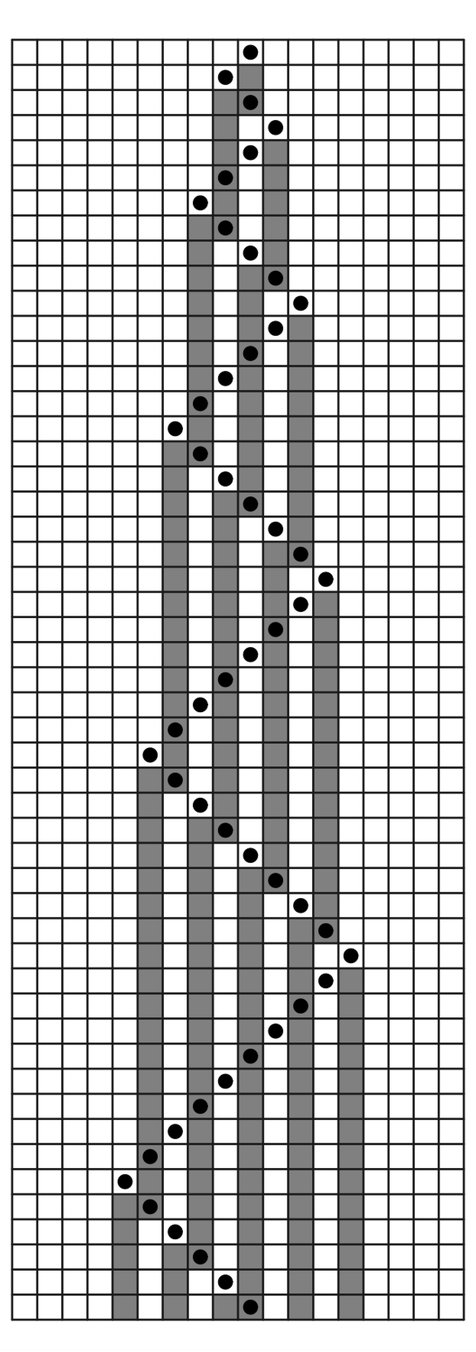As discussed in Chapter 3—and illustrated in the picture below—a mobile automaton has just a single active cell which moves around from one step to the next. And because this active cell is the only one that ever gets updated, there is never any issue about synchronizing behavior of different elements at a given step.
Yet at first it might seem absurd to think that our universe could work like a mobile automaton. For certainly we do not notice any kind of active cell visiting different places in the universe in sequence. And indeed, to the contrary, our perception is that different parts of the universe seem to evolve in parallel and progress through time together.
But it turns out that what one perceives as happening in a system like a mobile automaton can depend greatly on whether one is looking at the system from outside, or whether one is oneself somehow part of the system. For from the outside, one can readily see each individual step in the evolution of a mobile automaton, and one can tell that there is just a single active cell that visits different parts of the system in sequence. But to an observer who is actually part of the mobile automaton, the perception can be quite different.
For in order to recognize that time has passed, or indeed that anything has happened, the state of the observer must somehow change. But if the observer itself just consists of a collection of cells inside a mobile automaton, then no such change can occur except on steps when the active cell in the mobile automaton visits this collection of cells.
And what this means is that between any two successive moments of time as perceived by an observer inside the mobile automaton, there can be a great many steps of underlying mobile automaton evolution.
If an observer could tell what was happening on every step, then it would be easy to recognize the sequential way in which cells are updated. But because an observer who is part of a mobile automaton can in effect only occasionally tell what has happened, then as far as such an observer is concerned, many cells can appear to have been updated in parallel between successive moments of time.
To see in more detail how this works it could be that it would be necessary to make a specific model for the observer. But in fact, it turns out that it is sufficient just to look at the evolution of the mobile

A mobile automaton in which only the single active cell indicated by a dot is updated at each step, thereby avoiding the issue of global synchronization.



